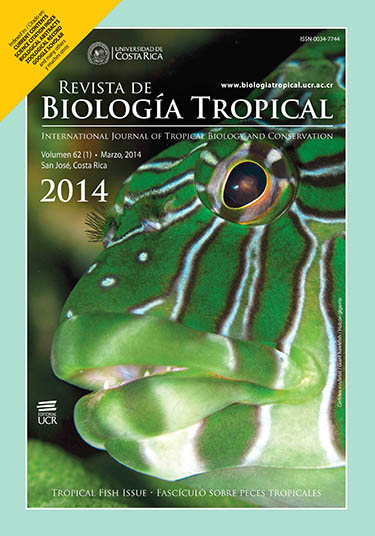Abstract
The factors that determine the existence of tropical forests dominated by a single species (monodominated forests) have been the subject of debate for a long time. It has been hypothesized that the low frequency of disturbances in monodominated forests and the tolerance to shade of the monodominant species are two important factors explaining the prolonged dominance of a single species. We determined the role of these two factors by examining the effects of logging activities on the floristic composition and seedling dynamics in a Prioria copaifera dominated forest in Southeastern Costa Rica. We determined the floristic composition for trees ≥2.5cm DBH and the associated recruitment, survival and mortality of tree canopy seedlings in two sites logged two (L-02) and 12 years (L-12) prior to sampling and an unlogged forest (ULF). Our results showed that L-02 stands had lower species richness (25 species) than the L-12 and ULF stands (49 and 46 species, respectively). As expected, we found significant logging effects on the canopy structure of the altered forests, particularly when comparing the L-02 and the ULF stands. Seedling density was higher in ULF (0.96 seedlings/m2) than in the L-02and L-12 stands (0.322 and 0.466 seedlings/m2, respectively). However, seedling mortality was higher in the ULF stands (54%) than in the L-02 (26%) and L-12 (15%) stands. P. macroloba in L-02 was the only species with abundant regeneration under P. copaifera in L-02 stand, where it accounted for 35% of the seedlings. Despite the reduction in seedling abundance observed after logging, P. copaifera seems to maintain large seedling populations in these forests, suggesting that this species maintains its dominance after logging disturbances. Our findings challenge the hypothesis that the regeneration of monodominant species is not likely to occur under heavily disturbed canopy conditions.##plugins.facebook.comentarios##
Downloads
Download data is not yet available.






